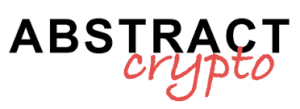Jonathan Levin, the new CEO in charge of the on-chain analysis company Chainalysis, is concerned about the unclear regulation regarding crypto stablecoins.
In a note published today, it expressed hope that the United States Congress will change some aspects of the current regulation, which stifles American companies.
All the details below
Chainalysis announces the new CEO after the departure of Michael Gronager
The blockchain analysis company Chainalysis announced a leadership change following the departure of Michael Gronager in October. In a statement on December 5, the company declared that Jonathan Levin has been appointed CEO.
The appointment of the CEO of Chainalysis occurred about two months after the company had stated that Gronager had taken a leave of absence, citing personal reasons. Additionally, Paul Auvil, former chief financial officer of Proofpoint, was appointed as an independent director on the board of directors.
This internal reshaping of the company, engaged in blockchain analysis, reflects the evolutionary change of the crypto landscape.
In a recent interview, the new CEO stated that Chainalysis will continue to expand internationally.
His main objectives are the protection of users in the crypto world and the monitoring of custody solutions for digital assets in the private sector.
Levin added that he does not expect changes in the approach of policymakers regarding anti-money laundering (AML) and national security.
However, the same entrepreneur believes that on the stablecoin front, strong changes will be adopted in terms of regulation.
What is most pressing is the need for new regulations due to the uncertainty regarding the issuance of stablecoin, redemption, and international supervision.
Stablecoin crypto: 2025 should lead to more transparent regulation
The new CEO of Chainalysis expects that the United States Congress will take drastic measures in 2025 to review the regulation of stablecoins.
In particular, the first step could be the repeal of the Staff Accounting Bulletin 121, a regulation that requires financial institutions to keep clients’ digital resources on their balance sheets.
Some legislators had tried to eliminate the rule introduced in 2022, but the former democratic president Joe Biden had vetoed, preventing the repeal.
With the arrival of Donald Trump, however, the crypto sector will finally be able to say goodbye to this suffocating regulation that limits its growth possibilities.
In particular, stablecoin issuers struggle to keep track of all the track records of financial operations conducted with their own currencies.
Even more so if these resources are issued in a decentralized manner, ad personam control becomes practically impossible when crossing international territories.
In his speech, the CEO of Chainlysis also referred to a possible renewal of regulation for other types of asset.
Here is what was reported verbatim by Levin:
“We will probably witness higher levels of guidance and potentially even some no-action letters in the United States on new types of applications and crypto tokens”.
Stablecoin market in strong growth in 2024
Despite still quite uncertain regulation, the stablecoin sector continues to record numbers from bull.
As reported by The Block, the Total Stablecoin Supply is at an all-time high for the number of coins issued on the market.
Currently, we have a capitalization of 199 billion dollars, growing about 100 times compared to December 2020. Even since the beginning of the year, we have witnessed a strong increase in stablecoins, with about 70 billion new coins issued.
USDT represents the largest stablecoin in the market with a dominance of 61.8%.
Next, we find USDC managing 25.24%, while the podium is closed by the newcomer USDe with 4.17%.
Honorable mentions also for DAI, FDUSD, PYUSD, and TUSD.
The market share of stablecoin US-pegged (which track the value of the US dollar) is much greater compared to those pegged to the euro.
This detail shows that a suffocating regulation like that of MiCA in Europe does not help the digital asset sector.


